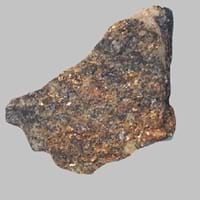Definition
A water-soluble mineral sediment resulting from concentration and crystallization by evaporation from an aqueous solution
Adakite is an intermediate to felsic volcanic rock that has geochemical characteristics of magma which is said to be formed by partial melting of altered basalt that is subducted below volcanic arcs
Origin
USA
Adak, Aleutian Islands
Discoverer
Usiglio
Defant and Drummond
Etymology
From a sediment left after the evaporation
From Adak, Aleutian Islands
Class
Sedimentary Rocks
Igneous Rocks
Sub-Class
Durable Rock, Soft Rock
Durable Rock, Medium Hardness Rock
Group
Not Applicable
Volcanic
Other Categories
Coarse Grained Rock, Fine Grained Rock, Medium Grained Rock, Opaque Rock
Fine Grained Rock, Medium Grained Rock, Opaque Rock
Texture
Earthy
Porphyritic
Color
Colourless, Green, Grey, Silver, White
Black, Brown, Light to Dark Grey
Durability
Durable
Durable
Appearance
Glassy, Vesicular and Foilated
Dull and Soft
Interior Uses
Decorative Aggregates, Entryways, Flooring, Homes, Interior Decoration
Decorative Aggregates, Floor Tiles, Homes, Hotels, Kitchens
Exterior Uses
As Building Stone, As Facing Stone, Garden Decoration, Paving Stone
As Building Stone, As Facing Stone, Office Buildings
Other Architectural Uses
Curbing
Whetstones
Construction Industry
As a Flux in the Production of Steel and Pig Iron, As a Sintering Agent in Steel Industry to process Iron Ore, As Dimension Stone, Cement Manufacture, for Road Aggregate, Making natural cement, Manufacture of Magnesium and Dolomite Refractories
As Dimension Stone, Cobblestones, Rail Track Ballast, Roadstone
Medical Industry
Taken as a Supplement for Calcium or Magnesium
Not Yet Used
Antiquity Uses
Artifacts
Monuments, Sculpture, Small Figurines
Commercial Uses
Used in the manufacture of Ceramic Powder, Used in the preparation of Sulfuric Acid and Silicon Diborite
Commemorative Tablets, Pottery, Used in aquariums
Types
Not Available
Not Available
Features
Generally rough to touch, Splintery, Veined
Has High structural resistance against erosion and climate, Host rock for Diamond, Very fine grained rock
Archaeological Significance
Monuments
Not Yet Used
Used
Famous Monuments
Not Applicable
Data Not Available
Sculpture
Not Yet Used
Used
Famous Sculptures
Not Applicable
Data Not Available
Figurines
Not Yet Used
Used
Formation
Evaporite is water-soluble mineral sediment which forms from concentration and crystallization by evaporation from an aqueous solution.
Adakite rocks are formed when the hydrous fluids are released from minerals that break down in metamorphosed basalt, and rise into the mantle they initiate partial melting.
Mineral Content
Calcite, Cancrinite, Gypsum, Kyanite, Magnetite
Olivine, Plagioclase, Pyroxene
Compound Content
CaMg(CO3)2, CaO, Calcium Sulfate, KCl, MgO, NaCl
Aluminium Oxide, MgO, Silicon Dioxide
Types of Metamorphism
Burial Metamorphism, Cataclastic Metamorphism, Contact Metamorphism, Impact Metamorphism, Regional Metamorphism
Cataclastic Metamorphism, Contact Metamorphism, Impact Metamorphism, Regional Metamorphism
Types of Weathering
Not Applicable
Chemical Weathering, Mechanical Weathering
Types of Erosion
Not Applicable
Coastal Erosion, Sea Erosion, Water Erosion
Grain Size
Medium to Fine Coarse Grained
Fine to Medium Grained
Fracture
Conchoidal
Conchoidal
Streak
White
Bluish Black
Porosity
Less Porous
Less Porous
Luster
Subvitreous to Dull
Grainy, Pearly and Vitreous
Compressive Strength
Not Available
Cleavage
Perfect
Not Available
Toughness
Not Available
Not Available
Specific Gravity
2.86-2.99
Not Available
Transparency
Translucent
Opaque
Density
2.8-2.9 g/cm3
Not Available
Specific Heat Capacity
Not Available
Resistance
Heat Resistant, Pressure Resistant
Heat Resistant, Pressure Resistant, Wear Resistant
Deposits in Eastern Continents
Asia
Not Available
India, Russia
Africa
Not Available
Ethiopia, Somalia, South Africa
Europe
United Kingdom
Iceland
Others
Not Yet Found
Not Yet Found
Deposits in Western Continents
North America
USA
Canada, USA
South America
Colombia, Paraguay
Brazil
Deposits in Oceania Continent
Australia
Central Australia, Western Australia
Not Yet Found
All about Evaporite and Adakite Properties
Know all about Evaporite and Adakite properties here. All properties of rocks are important as they define the type of rock and its application. Evaporite belongs to Sedimentary Rocks while Adakite belongs to Igneous Rocks.Texture of Evaporite is Earthy whereas that of Adakite is Porphyritic. Evaporite appears Glassy, Vesicular and Foilated and Adakite appears Dull and Soft. The luster of Evaporite is subvitreous to dull while that of Adakite is grainy, pearly and vitreous. Evaporite is available in colourless, green, grey, silver, white colors whereas Adakite is available in black, brown, light to dark grey colors. The commercial uses of Evaporite are used in the manufacture of ceramic powder, used in the preparation of sulfuric acid and silicon diborite and that of Adakite are commemorative tablets, pottery, used in aquariums.










